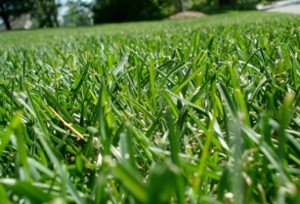Organic Lawn Services
 Organic Lawn Services covers a lot of things some of which we have outlined below and in previous posts. Our previous posts have discussed the height of the lawn and also the amount of water to apply. This post continues with the theme of organic lawn care. Discussing the types of fertilizer to use on your lawn to maintain a strong healthy-looking lawn that looks great. A healthy lawn can also fight invasions of various weeds and pests.
Organic Lawn Services covers a lot of things some of which we have outlined below and in previous posts. Our previous posts have discussed the height of the lawn and also the amount of water to apply. This post continues with the theme of organic lawn care. Discussing the types of fertilizer to use on your lawn to maintain a strong healthy-looking lawn that looks great. A healthy lawn can also fight invasions of various weeds and pests.
The principle mentioned in our first post about purely organic lawn care is to maintain a healthy lawn. Do this so that the weeds cannot compete with your lawn! A healthy lawn will do a lot more to keeping the weeds down. You can avoid having to use pesticides as well!
Refer to some of our previous posts that talk about PH levels, cutting and watering your grass, and digging out those pesky dandelions if you have them.
Types of Fertilizer to use for a Natural Green Organic Lawn
I have often wondered what was the difference between organic and inorganic fertilizer. Well, it turns out that it is more to do with origin than components. Inorganic fertilizer is either mined or produced using synthetic manufacturing methods. It has nutrients added that are specifically for the plants you are trying to help grow. That is one of the reasons that fertilizer for lawns will be different from fertilizer for vegetables.
Organic fertilizer is made from organic materials such as chicken litter, manure, worm castings, compost, seaweed, guano, bone meal, or naturally occurring mineral deposits (e.g. saltpeter). The objective of many people when they use organic materials is to avoid the use of chemicals.
They often fail to realize or think about the possible contaminants that could also be in the organic fertilizers. For me, I want to stay away from pesticides. Since they have been proven to cause harm to humans as well as animal life. Whether I use organic or inorganic fertilizer is less important for me.
Add Lawn Fertilizer For the Best Organic Lawn Services
Whether you are using inorganic or organic-based lawn care, you need to add the right kind of fertilizer to your lawn at the right time of year. There are three components to most fertilizers –
– nitrogen, phosphorus, and potassium.
If you purchase a bag of fertilizer of 50 pounds, a 50-pound bag of 22-3-14 fertilizer has 11 pounds of nitrogen, 1.5 pounds of phosphorus, and 7 pounds of potassium in it. The rest is filler or secondary ingredients like iron that help the important components disperse more evenly.
- Nitrogen – aids in blade growth or the top part of the plant
- Phosphorus – aids in root growth
- Potassium – keeps the plant healthy and disease resistant
You need all three components to ensure you have a healthy lawn, the roots are deep where they can reach water during dry spells. The blades are thick and strong to resist weeds. The plant overall is healthy so it can maintain itself during harsh conditions such as too much rain or too little rain or even cold conditions. A strong healthy lawn also looks great too.
Apply nitrogen-rich fertilizers in the spring and early summer and then low nitrogen fertilizers later in the year as the grass goes into a dormant phase. For example, you do not want your grass growing during the fall when it is supposed to be entering a dormant phase.
Organic Lawn Services – Avoid Burning Your Lawn
High nitrogen fertilizers can also burn your lawn if not applied properly. Spread it thinly and follow the manufacturer’s instructions. Organic lawn care service people will tell you that organic fertilizers are lower in nitrogen content so there is less chance of burning or harming your lawn with organic-based fertilizer. Also, your grass clippings will contain all three elements. If you mulch your lawn clippings the three chemicals will go directly back into your lawn as food. It also acts as a blanket to conserve moisture as well for the roots.
If you are planning to use an Organic Lawn Service, always review with them what they plan to use, how often it will be applied, and whether you need to water afterward or not. Make sure that you have it in writing so that if you do not get the results you are expecting, you will then have something to back you up.
One negative side effect of having a strong healthy lawn is that you will need to mow the lawn more often since it grows faster. In addition, if you plan to use a mulching lawnmower, you should not let the grass grow more than one inch before you mow the lawn to obtain the most advantage from the mulching process. The lawn suffers less damage as well when you mow it more often and mulch the grass clippings.
You can follow any responses to this entry through the RSS 2.0 feed. You can leave a response, or trackback from your own site.


October 8th, 2012 at 3:24 pm
well these guys can talk all they want about organic lawn care, but unless you really get to work and pull weeds they will not disappear by themselves. Sure a healthy lawn will help to control them, but you still have to pull weeds every week. They grow so fast